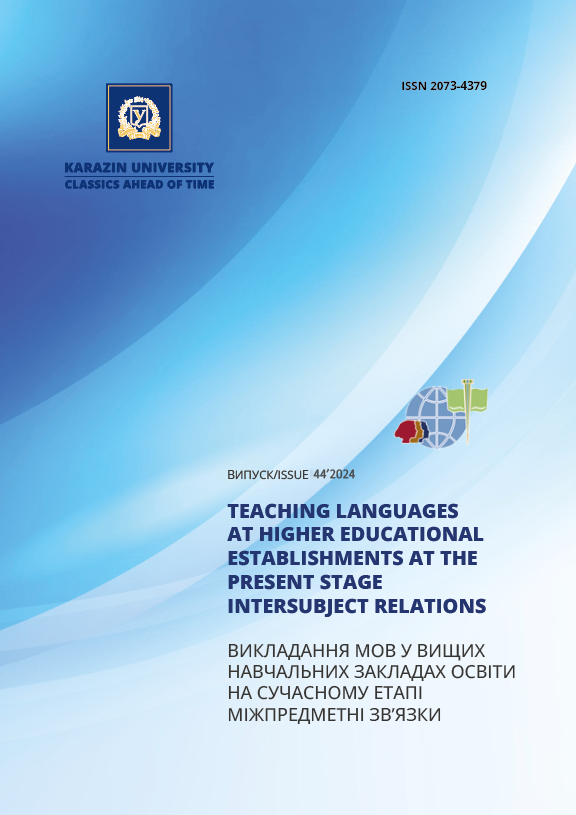Features of using social networks in self-learning foreign languages
Abstract
The 21st century witnesses a significant surge in the role of a specific communication environment within a special network community. This phenomenon has catalysed the emergence of a new paradigm in educational activity, particularly in the realm of foreign languages. This paradigm, characterized by network learning and self-learning, is founded upon the principles of mass cooperation, the ideology of educational resource openness, and the networked organization of participants’ interaction. This article explores the possibilities and peculiarities of utilizing network technologies in students’ self-directed foreign language learning. Through network interaction, students can vastly expand the scope of linguistic self-education by leveraging social network cooperation, polymodal interaction, and the creation of virtual foreign language communicative environments. Central to this discussion are the main characteristics of networked educational interaction, which play pivotal roles in fostering individual subjectivity development. It is argued that network interaction affords students the opportunity to access a diverse range of conditions for shaping their individual trajectories of linguistic self-education. Moreover, foreign language instruction should encompass not only imparting knowledge and skills for information activities but also cultivating a culture of communication within the digital environment and fostering virtual intercultural competence. In conclusion, harnessing the vast potential of network technologies in foreign language self-learning facilitates language proficiency enhancement and effective development of skills across all types of language activities. Future research should focus on identifying pedagogical conditions conducive to cultivating students’ abilities in creating personalized linguistic self-educational environments
Downloads
References
Ivashnova, S.V. (2012). Vykorystannia sotsialnykh servisiv ta sotsialnykh merezh v osviti [Use of social services and social networks in education]. Naukovi zapysky Nizhynskoho derzhavnoho universytetu im. Mykoly Hoholia. Seriia: Psykholoho-pedahohichni nauky [Proceedings of Mykola Gogol Nizhyn State University. Series: Psychological and pedagogical sciences]. No. 2. pp. 15-17 [in Ukrainian].
Yaremchuk, V. (2015). Poniattia, funktsii ta osoblyvosti sotsialnykh Internet-merezh [Concepts, functions and features of social Internet networks]. Available at: https://naub.oa.edu.ua/ponyattya-funktsiyi-ta-osoblyvosti-sotsia/ [Accessed 26 Feb. 2024] [in Ukrainian].
Boyd, D.M., Ellison, N.B. (2007). Social network sites: Definition, history, and scholarship. Journal of Computer-Mediated Communication. 13 (1). Available at: http://jcmc.indiana.edu/vol13/issue1/boyd.ellison.html [Accessed 26 Feb. 2024].
Encyclopaedia of Information Technology. (2007). Delhi: Atlantic Publishers & Distributors.
Hi Native. Available at: https://hinative.com/ [Accessed 26 Feb. 2024].
InterPals. Available at: https://www.interpals.net/ [Accessed 26 Feb. 2024].
Ling. Available at: https://ling-app.com/ [Accessed 26 Feb. 2024].
My Language Exchange. Available at: https://www.mylanguageexchange.com/ [Accessed 26 Feb. 2024].
Rosetta Stone. Available at: https://www.rosettastone.com/ [Accessed 26 Feb. 2024].
Tandem. Available at: https://www.tandem.net/ru/language-exchange/ukraine [Accessed 26 Feb. 2024].

